How to choose the right stepper motor
|
You may not even know where stepper motors are used during daily routine activities . Thanks to their versatility, stepper motors have become the main part of the devices we use in our private and professional lives. You can find them, for example, in classic printers and 3D printers, in cars, in medical scanners or perhaps in gaming machines. They are mainly used where precise position control is desired at low and medium speeds. They are popular mainly because of their relatively low purchase price (thanks to simpler construction and production) and they do not even require demanding care, which goes hand in hand with low service costs. |
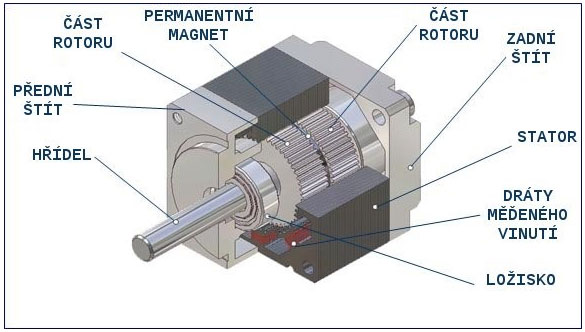 |
The NEMA standard ensures that motors of the same specific size must have the same mounting hole diameters, the same mounting hole spacing, the same shaft centering boss size, and the same shaft diameter and length. Suppliers follow these characteristics, making it easier to choose between different engine brands. But still, it is possible that the motors may differ slightly in mechanical properties and specifications, but physically they should fit a specific NEMA size.
Enough of the theory, now a bit more practical issues related to stepper motors - choosing the right stepper motor.
If you are going to choose a stepper motor, but do not know which would be the best for your purpose, focus on the following data:
- NEMA standard
- step angle
- holding moment
NEMA standard
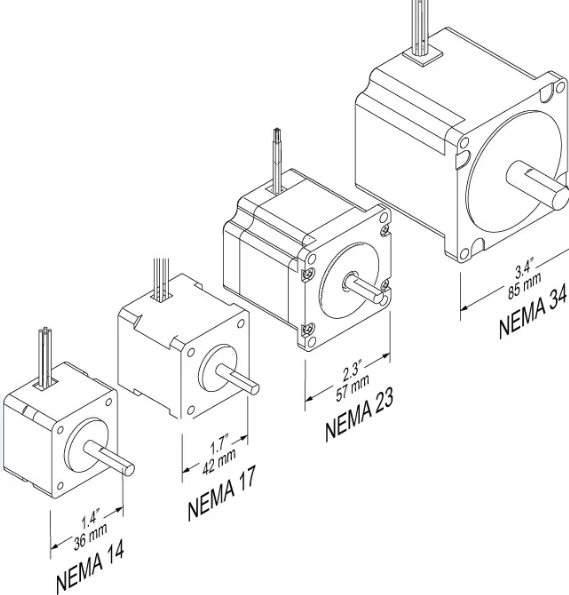 |
The most common stepper motors include motors in sizes: NEMA 14, 17, 23, 24 and 34 . The numerical designation means the size of the motor flange. The number is given in Inch units. For example, a NEMA 14 motor means it is 1.4 " (inches) = approx. 36mm (1 inch = 25.4mm). If you choose the wrong type of stepper motor, you could face complications. In the case of choosing a motor that is not sufficient for the device's requirements, overheating, insufficient acceleration and deceleration and generally poor performance may occur. Other indicators that you have not selected correctly are loss of pulses or incorrect positioning. If, on the other hand, you choose a motor that is far more powerful than necessary, the motor may run noisier and overall it will be more expensive to operate. Below you will find a table where the dimensions of the flange for a specific NEMA size are clearly written, including an indicative range of motor powers. |
| stepper motor size | NEMA 14 | NEMA 17 | NEMA 23 | NEMA 24 | NEMA 34 |
| flange edge | 35.3 mm | 42.3 mm | 56.4 mm | 60.0 mm | 86.0 mm |
| static moment | up to 0.2 Nm | 0.2 - 0.8 Nm | 0.8 - 2.5 Nm | 2.5 - 4.5 Nm | 4.5 - 12.0 Nm |
Step angle
The stepper motor , as you can probably guess from the name, works on the principle of movement in steps. It is about rotating the rotor by a certain angle between stable positions. The most common step size for stepper motors is 1.8° where the 1st revolution has 200 steps, so one step is a 1.8 degree turn. Other popular motors that rank among the finer ones are in the 0.9° size. If we consider that the initial conditions are the same - a 0.9° motor will have twice the step accuracy of a 1.8° motor.
1.8° = 360 / 1.8 = 200 steps per revolution
0.9° = 360 / 0.9 = 400 steps per revolution
0.45° = 360 / 0.45 = 800 steps per revolution
Holding moment
Another parameter that is essential for choosing the right stepper motor is the holding torque . Its value is given in units of Newton/centimeter. The holding torque determines the maximum external torque that is exerted on the motor in a static, non-rotating position when energized. Another data is the turning moment, it is the moment when the motor starts to rotate and indicates the limit value of the moment during stable and constant operation of the motor without loss of step.
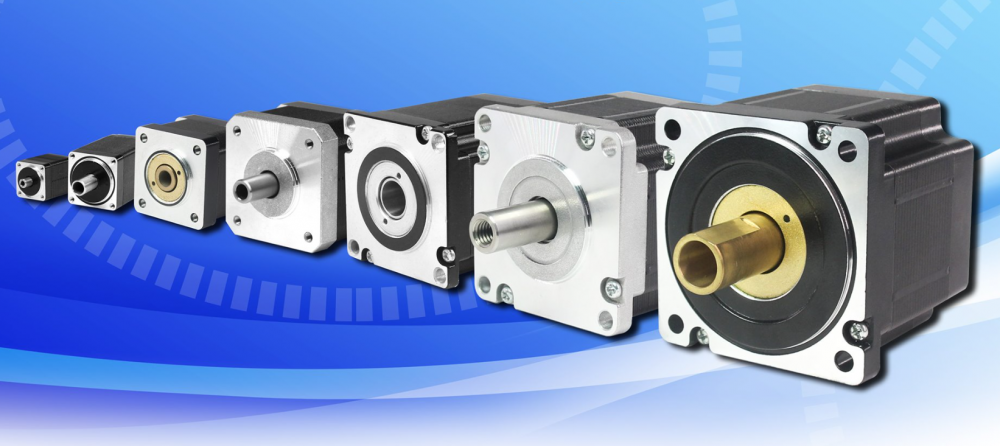
Recommended products8
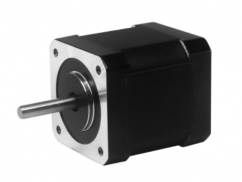
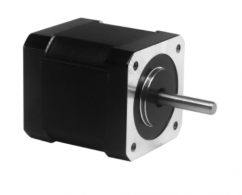
PrimoPal stepper motor Nema 17 (8 N/cm, length L-Max: 21 mm) - PHB42W21-403
| Color | Silver |
|---|
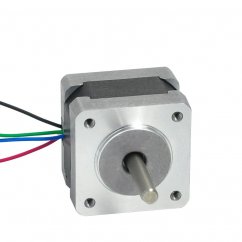
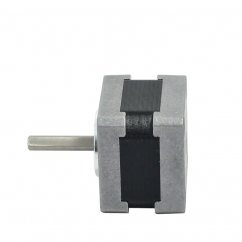
PrimoPal stepper motor Nema 14 (5 N/cm, length L-Max: 20 mm) - PHB35Y20-404
| Color | Silver |
|---|


PrimoPal Nema 14 stepper motor (18 N/cm, L-Max length: 34 mm) - PHB35Y34-401
| Color | Silver |
|---|
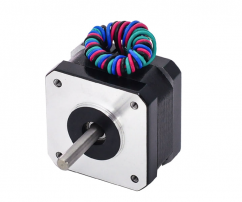
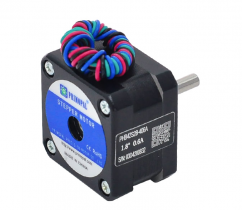
PrimoPal stepper motor Nema 17 (10 N/cm, length L-Max: 20 mm) - PHB42S20-410
| Color | Silver |
|---|


PrimoPal Nema 17 stepper motor (12 N/cm, L-Max length: 28 mm) - PHB42S28-406
| Color | Silver |
|---|

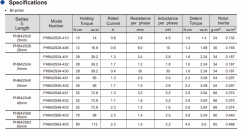
PrimoPal Nema 17 stepper motor (28 N/cm, L-Max length: 34 mm) - PHB42S34-401
| Color | Silver |
|---|


PrimoPal stepper motor Nema 17 (40 N/cm, length L-Max: 40 mm) - PHB42S40-401
| Color | Silver |
|---|
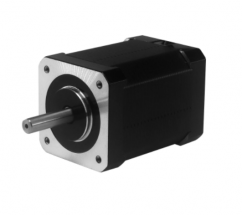

PrimoPal Nema 17 stepper motor (52 N/cm, L-Max length: 48 mm) - PHB42S48-401
| Color | Silver |
|---|

